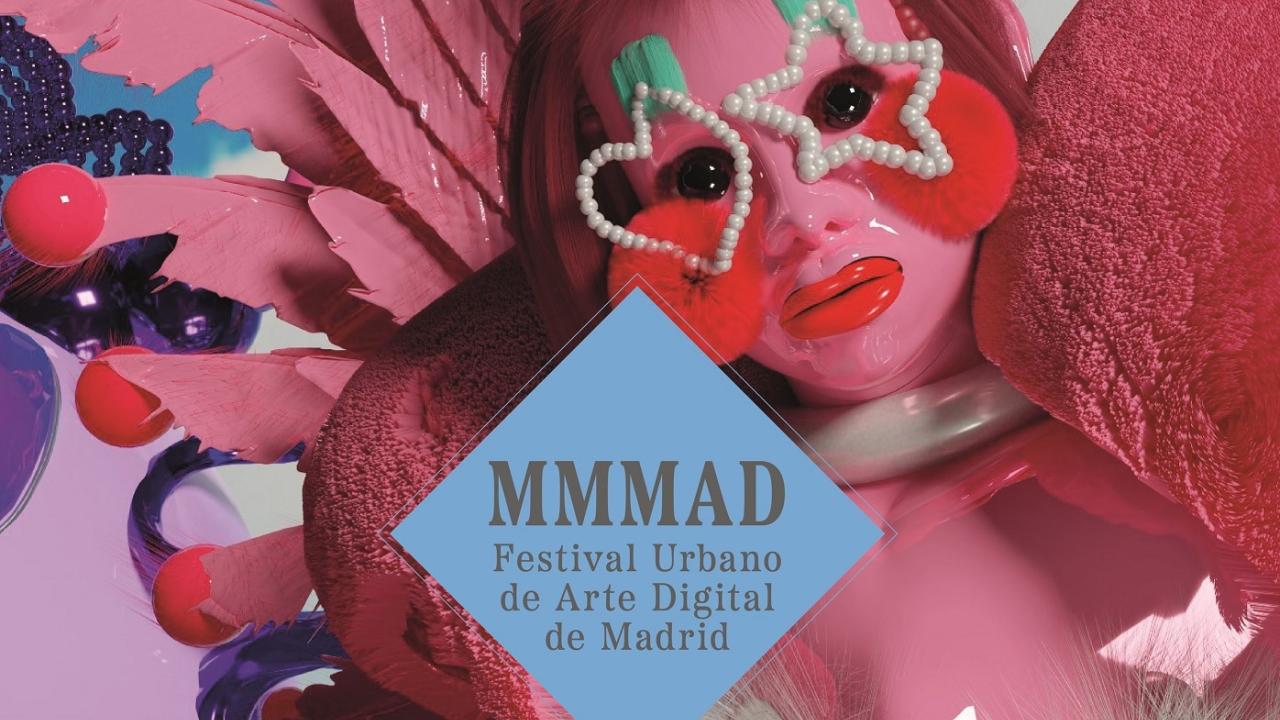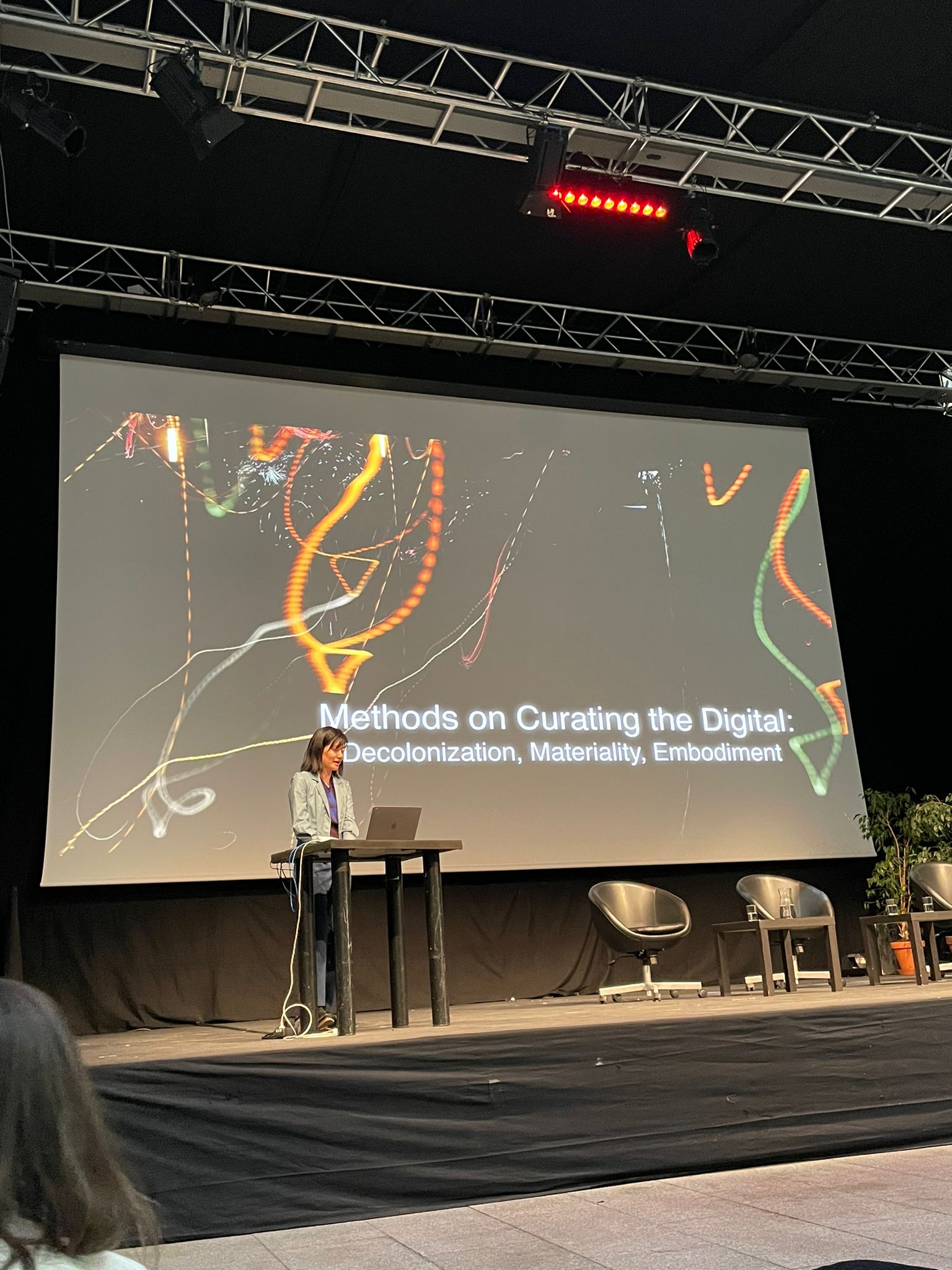by Delfina Sena
The 4th edition of Madrid’s Urban Digital Art Festival is happening this May with a colorful and insightful program entirely dedicated to digital art. It offers a series of exhibitions, workshops, and talks in different locations in Madrid - and, of course, we wouldn't miss it! Delfina Sena, Project Manager at Artpool, was there. She visited some of the exhibitions as well as the “Curating Digital Art” one-day conference at La Casa Encendida cultural center. She shares with us her precious and enlightening experience over a first-person testimonial:

The conference offered 4 talks, 2 round tables and a performance. In the morning, two international curators talked about curating digital art in physical and digital spaces. And what a mind-opener!
First, curator Julia Kaganskiy, based in NYC, shared her research about the Metaverse. She is preparing a show for a space in Madrid about it and questions: What do we think of when we talk about the Metaverse? She realized there are different ways of experiencing it: a digital space built to live only digitally, or the augmented reality of a digital space in the physical space. Kaganskiy accepts the fact “the virtual world is always with us and we no longer 'log off'”.
Her research goes further the digital reality. For Kaganskiy, the Metaverse represents a spatial and social interaction, the possibility of developing a new type of life different and why not better than the one we live in. Indeed, the digital space offers us the possibility to create a social and spatial structure different from the one we are already experiencing. We could think this is quite utopic, but humans have always pictured ideal ways of living...
It was enlightening to see all the research she is doing to understand, and thus to explain, what is actually the Metaverse. Now, I’m looking forward to visiting the exhibition she is preparing.


Curator and artist Martina Menegon, originally from Italy and living in Viena, has been developing her artistic career as a digital artist, and since 2019 she’s been also developing her curatorial practice. As an artist, she creates with the “idea of site specificity”: even when it comes to the digital space, she needs to understand where her pieces are going to be shown in order to produce them.
Her work as an artist has dictated her curatorial practice. Since 2019, she has been curating the digital art CIVA Festival in Viena. The first edition was 100% digital, but for the following editions, they decided to do a hybrid festival. Some pieces were meant to be shown only in digital space (a metaverse space created specifically for the festival); others were shown in physical locations, such as museums.
Her practice as an artist and as a curator is driven by the constant question “How can we experience digital art?”. In the seek for finding THE clue to experience digital art she realized there were a lot of things missing, beginning with the lack of material in physical spaces (digital art is always shown on screens), but also how to show it and present it in the digital space as well.

Both curators raised the same issue we at Artpool have been facing in this adventure: how to show digital art to a broader audience? We realized some time ago, and Julia and Martina are also aware of it, there is still a lot to do in education in terms of digital art. Educating better, and doing more research, in order to share it properly with our publics.
Education was the main topic Elodie Anglade talked about in her presentation.
Elodie is a young artist who had the opportunity to attend l’ECAL, an art and design school in Switzerland, where they propose a specialized Bachelor in digital art.
Imagine how amazed I was to learn this type of education existed!
Elodie took the time to show us and explain to us how the bachelor worked. The students have access to tip-top technology, they have coding, design, and modeling classes. Combining learning and practice, they have to produce a final project and an exhibition.
Wonderful!
Elodie shared with us the project she did: Digital DNA.
She realized the feeds on our social media showed her what she likes: tattoos, art, etc. In a way what we like is our DNA, our Digital DNA. She decoded the images, produced a motion design, took the colors and shapes associated with each type of image, and created her own Digital DNA.
The project may sound quite conceptual, but what is even more interesting about the school is that they encourage the students to show their work, and adapt it each time to the space they are showing it.
In conclusion, what initially is a conceptual artwork, ends up being a beautiful digital sculpture in motion.


Finally, it was very interesting to hear about the experience of curator Emily Hsiang-Yun Huang from Taiwan. Her work as a digital art curator is centered around the topic of decolonization. Emily Hsiang-Yun Huang is very concerned with understanding how things can be so different and so similar in different parts of the (art) world.
Either in America, Europe, or Asia what is of interest is to notice how we all care and THINK about the same concerns:
How can we bring digital art to the physical space?
How can we experience art in the digital space?
How things are going to evolve?
How can we bring more education about digital art to a broader audience?
The conference lasted only one day, but the MMMAD Festival is on view until the end of the month of May in different spaces in Madrid. If you have the opportunity to go there, don't miss it!